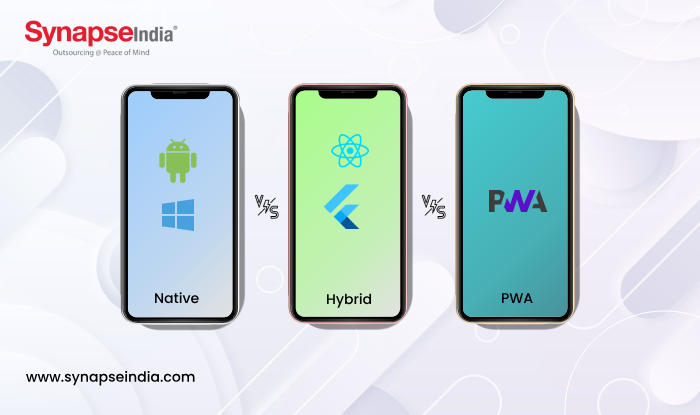 22 Mar 2024
22 Mar 2024
A modern approach to content management systems, Headless CMS has revolutionized the way content is created, managed, and delivered across digital channels. Like any other CMS, it backend with the presentation layer between two components which allows greater flexibility and scalability in content delivery. The architecture of Headless CMS makes content stored and managed in a backend database or repository. On the other hand, the presentation layer, or front end, is separate and can be built using any technology stack or framework. This separation enables developers to deliver content seamlessly across various devices and platforms, including websites, mobile apps, IoT devices, and more. Let’s study more on the benefits of Headless CMS and its implementation.

With a diverse range benefits of Headless CMS offers benefits that cater to the evolving needs of modern businesses. Here are some of the key advantages in more detail:
Unmatched flexibility is possible with a headless CMS since it separates the frontend presentation layer from the backend content management. This frees businesses from the limitations of a traditional CMS and enables them to experiment with new technologies, scale their digital presence, and respond swiftly to changing requirements.
Content may be readily distributed across a variety of channels and devices, including digital displays, mobile apps, websites, and Internet of Things devices, with headless CMS. This increases brand awareness and engagement by allowing businesses to provide users with a unified and uniform experience across all touchpoints.
Headless CMS simplifies the development process by separating presentation from content management, enabling developers to focus on frontend and backend components separately. As a result, digital initiatives can be launched more quickly since upgrades and modifications can be made more effectively without upsetting the system as a whole.
With headless CMS, developers may select lightweight frameworks and technologies that are optimized for certain use cases, hence improving front-end performance. This results in improved user experiences, quicker page loads, and overall performance—all of which are critical for attracting and keeping consumers.
As technology continues to evolve, the benefits of Headless CMS provide a future-proof foundation for digital initiatives. Organizations can seamlessly integrate new technologies, channels, and devices as they emerge, ensuring that their digital presence remains relevant and competitive in the long term.
Headless CMS offers digital projects a future-proof base as technology develops further. When new gadgets, channels, and technologies arise, organizations may easily incorporate them to make sure their online presence is long-lasting and competitive.
By separating the front end from the back end, headless CMS decreases the attack surface and makes it harder for bad actors to take advantage of security holes. To further improve data safety and compliance, headless CMS solutions frequently include strong security features like encryption, role-based access control, and frequent security updates.

To guarantee flawless integration and peak performance, there are a few essential stages involved in implementing a headless CMS. An outline of the implementation procedure is provided below:
Start by evaluating the content management demands of your company, taking into account the kinds of content you oversee, the distribution channels you use, and the scalability specifications. Determine the precise features and capabilities that a headless CMS must have to successfully fulfill these demands.
Select a headless content management system that meets your needs and goals. Take into account elements like developer friendliness, scalability, ease of use, API capabilities, and support for omnichannel content delivery.
Provide a content model that outlines the characteristics, connections, and organization of your content objects. This model ought to be adaptable enough to take into account different kinds of content and formats, while also ensuring consistency and coherence across different channels.
Use APIs to integrate the headless CMS with your websites, digital channels, and front-end apps. To access and get material from the CMS, API endpoints must be set up. Webhooks must also be implemented to receive real-time updates and notifications.
Create front-end elements and templates to render material on the user interface after consuming it from the headless CMS. Make use of frontend frameworks and modules like Vue.js, Angular, or React to create responsive, dynamic user interfaces that perform seamlessly.
Make sure that the headless CMS and frontend apps are compatible, fast, and secure by thoroughly testing their integration. To verify the user experience and pinpoint areas that need work, do usability testing. Adjust the implementation in light of user feedback.
After the implementation is finished, run the applications driven by the headless CMS examples and keep an eye on how well they function in practical situations. Maintain the system by keeping an eye on it constantly and making necessary updates, fixes, and improvements to keep it running smoothly and scalable in the long run.
The headless CMS examples content management systems enable businesses to create, modify, and provide outstanding online experiences amidst a progressively intricate and cutthroat environment.
These guidelines can help businesses successfully deploy headless content management systems (CMSs) and make use of their features to create dynamic, personalized, and interesting digital experiences for users across a range of platforms.

 30 May 2024
30 May 2024
 30 May 2024
30 May 2024.png)
 12 Feb 2025
12 Feb 2025
